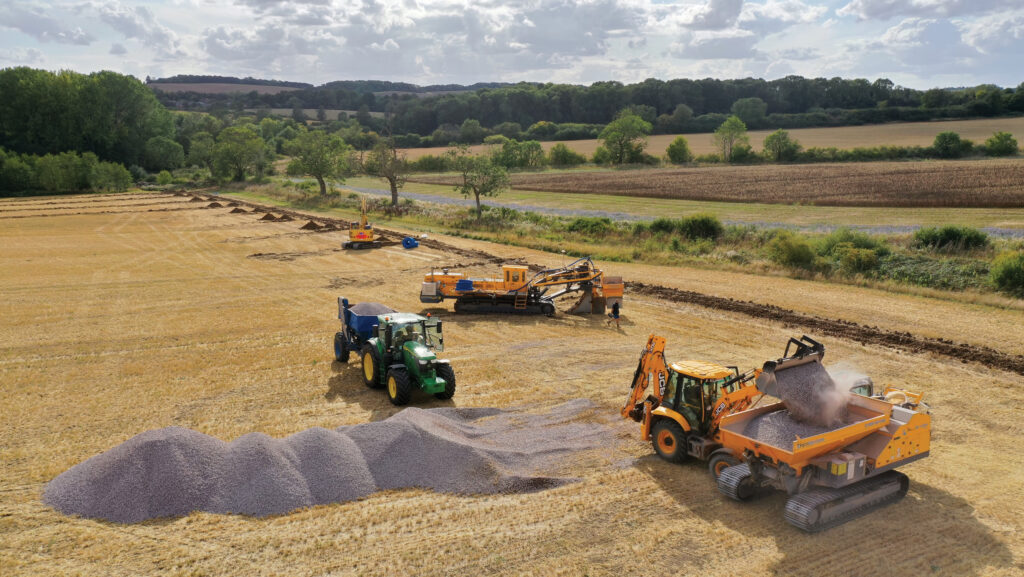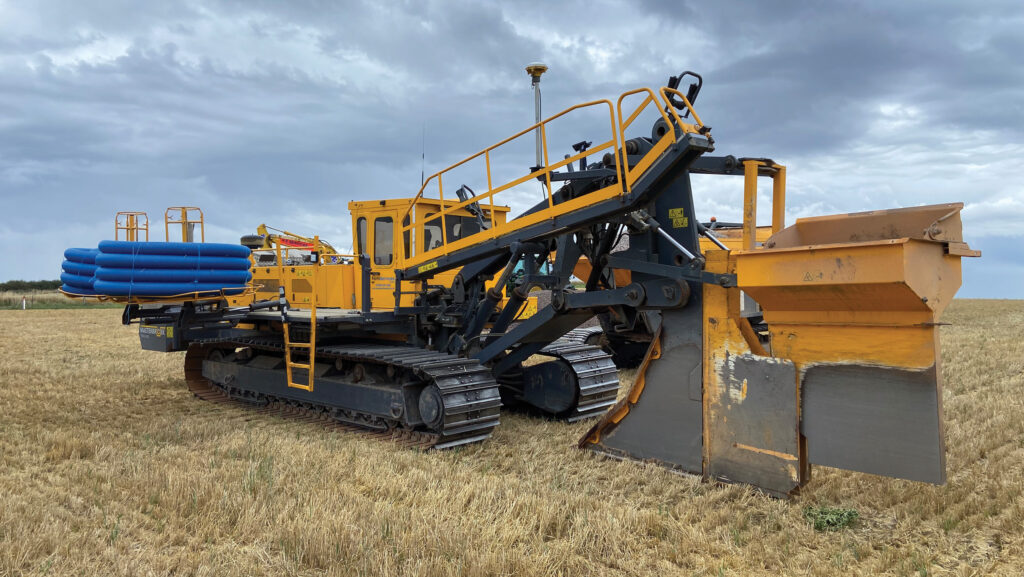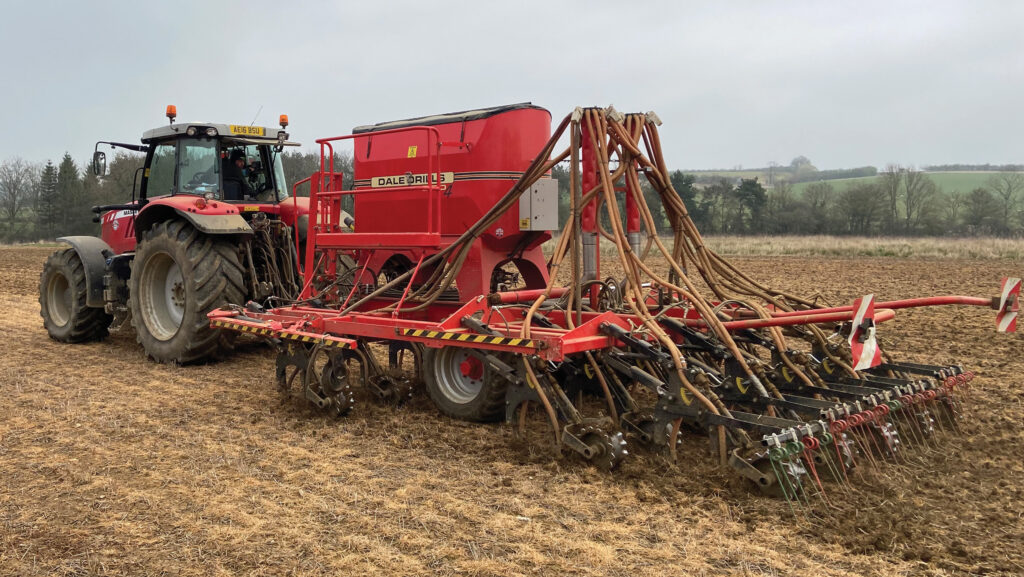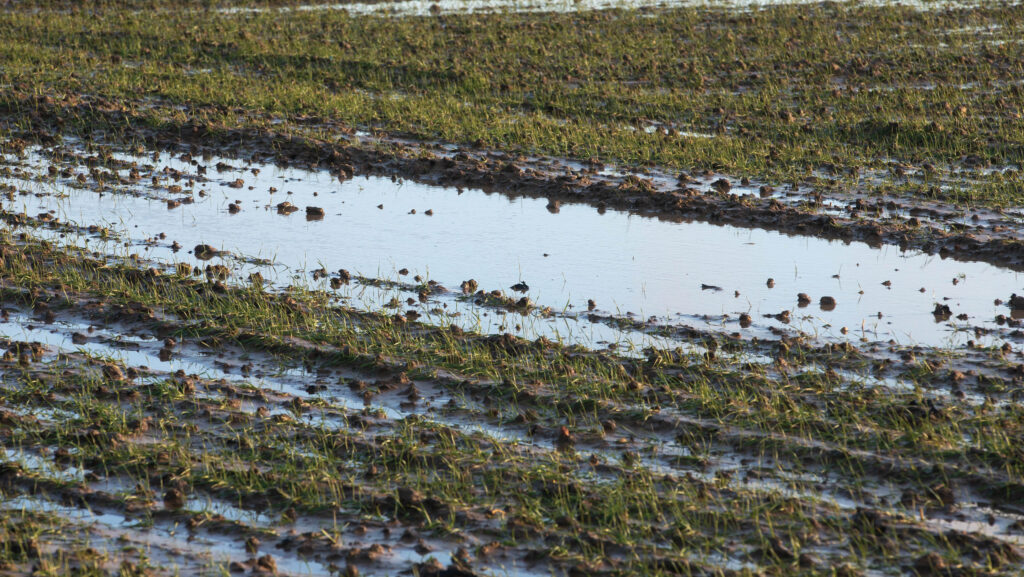Leicestershire arable farm begins first-of-kind drainage trial
 © GWCT
© GWCT The role of effective drainage in helping farmers to meet both environmental and productivity targets is the focus of an industry-wide research project which kicks off this autumn.
Believed to be the first of its type, the project at the Game and Wildlife Conservation Trust’s (GWCT) Allerton Project will produce data on the benefits that drainage has to offer – not just for the productivity reasons traditionally linked to the practice, but also for the soil health and wider environmental benefits essential for a sustainable future.
See also: How to get arable land ditches working for wildlife
A sloping 7.85ha arable field on the 320ha Loddington heavy land farm, which borders the Eye Brook, has been baselined and had a modern drainage scheme installed on half of it – with the remaining area relying on the original scheme which is believed to date back to the 1950s.

© GWCT
Both sides of the field will be monitored for the next three years, so that differences in production and environmental benefits can be analysed and related to the costs of installing a new scheme.
Struggling systems
As on many arable farms, the existing field drainage is struggling to cope with the huge amounts of rainfall that wetter winters and more frequent storm events are bringing, says Joe Stanley, head of sustainable farming at The Allerton Project.
Installed more than 40 years ago, when grant funding and government support was available, these systems are ailing and ageing, he stresses, with the majority at risk of being overwhelmed by climate change.

© Allerton Project
“It’s clear that we are approaching a cliff edge in terms of what current systems are capable of. They just weren’t designed for the volume of water that they are increasingly having to deal with, whatever farming system is in place.”
Met Office predictions that winters will become 30% wetter adds urgency to the work, he adds, especially as there is growing concern about the effects on soil health, with resulting sediment and nutrient loss having related consequences for air and water quality.
Wider view
“We need to understand more about these effects. Up until now, drainage has been considered with production in mind, it’s time to take a wider view and consider the environment, climate and biodiversity as well.”
He points out that it’s not unusual for the Leicestershire farm to receive its entire expected annual rainfall in a much tighter timeframe, adding that Storm Babet delivered 60mm of rain in a single day – mostly onto bare land or recently drilled ground.
“In that particular situation, we were unable to establish crops on up to 40% of our arable area in winter and spring 2023-24, despite having focused on improving soil health for the last two decades.
“We’ve also already seen drain collapse and failure from high water loading and overpressure. What used to be a one in 10-year weather event is now much more frequent.”
As a result, data being collected by the project partners includes soil biology, sediment/nutrient run-off and greenhouse gas emissions measurements, as well as the more usual infiltration rates, yield metrics and operational observations.
This will be added to eight years’ worth of data already collected from the field, as part of an existing research experiment with Syngenta on crop establishment techniques.
Old drainage systems: Common on-farm issues
- Siltation – the build up of sediment in drainage pipes, often in fine silty soils, or where outfalls are blocked
- Blockage – usually by tree, hedge or plant roots
- Collapse – heavy agricultural machinery and depth of cultivation causing damage
- Ochre – deposits that form in drains when soluble iron is oxidised, often needing regular jetting and rodding.
- Climate change – drainage systems overwhelmed by increased rainfall, leading to waterlogging and system damage
Climate change impacts
It will allow researchers to consider the real-world impact of climate change on soil function and structure, as well as assess the role that drainage can play in delivering environmental benefits to society.
“So much good work has been done on soil health in the last few years that it’s a shame that we are putting that in jeopardy by neglecting how it goes hand-in-hand with drainage.”
In some cases, drainage has been forgotten about in the enthusiasm for nature-based solutions, believes Joe. “It hasn’t been recognised or prioritised by policy makers and supply chains, even though we’ve seen complete crop failure in recent years from waterlogging and flooding.

© Tim Scrivener
“If these ageing and dilapidated systems are to be replaced, farming is going to need support. It’s a hugely expensive operation at £2,500-4,000/ha.”
Managing water in the farmed landscape comes in many guises, accepts Joe.
He points out that The Allerton Project has led the way in assessing alternative methods, such as leaky dams, reduced tillage, cover crops, buffer strips and wetlands.
“These all have a place and will continue to make a valuable contribution to farm situations. But it’s unrealistic to think they can do it all as climate change intensifies.”
Environmental data
For drainage contractor Rob Burtonshaw of Farm Services Ltd, the chance to be part of the new project is exciting.
“Next to nothing has been done on drainage research for the last forty years and there’s a complete void when it comes to environmental data, such as the greenhouse gas emissions from wet soils,” he explains.
“So having the scientific rigour applied to this trial that the GWCT is known for is a great opportunity and the wider food and farming sector will be able to have confidence in the results.
“It’s also a perfect site for doing the work, as we can look at the effect of different cultivation systems too.”
Drainage can be transformational in terms of productivity but is often taken for granted, adds Rob. “Given the unpredictability of the weather and the role of drainage in future-proofing farms, this work is long overdue.”
Anglian Water
There have been very few trials done on optimising drainage solutions, especially in the light of the changing climate and the increasing popularity of less intensive farm management practices, notes Richard Reynolds, senior agronomy adviser at Anglian Water.
From the water company’s perspective, any practical insights that come from the trial on how drainage can be managed to reduce input losses, protect water resources and support productive farming systems will be valuable, he says.
“We know that managing water on heavy soils is a constant challenge, but we need to avoid drainage channels becoming pathways for nutrients and other inputs to leave the field.”
For these reasons, Anglian Water is involved in the project. “Data on how farming practices interact with new and old drainage systems on clay soils will be useful as we develop best practice recommendations.”
Evidence to support investment in both nature-based solutions and infrastructure, along with insights to inform policy and catchment management strategies, are other expected outcomes from the project, he adds.
Project partners
- The Allerton Project
- National Association of Agricultural Contractors
- AHDB
- Natural England/Catchment Sensitive Farming
- Anglian Water
- Mastonbroek
- GW Axup & Co
- Farm Services

